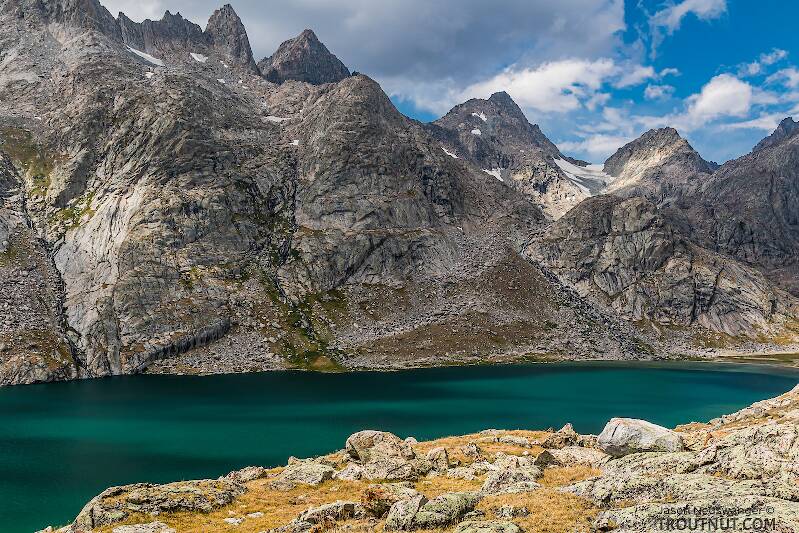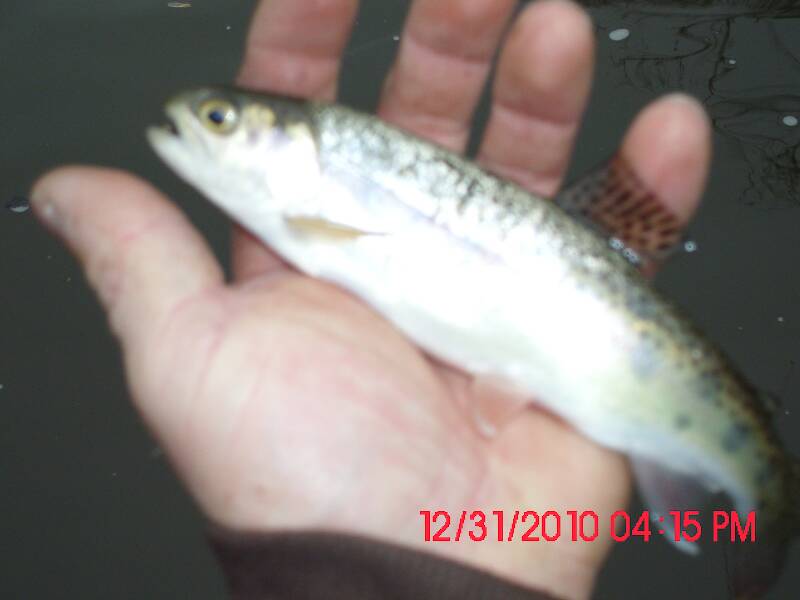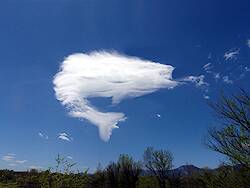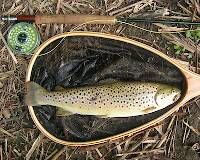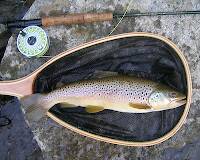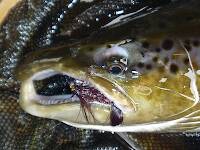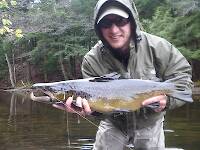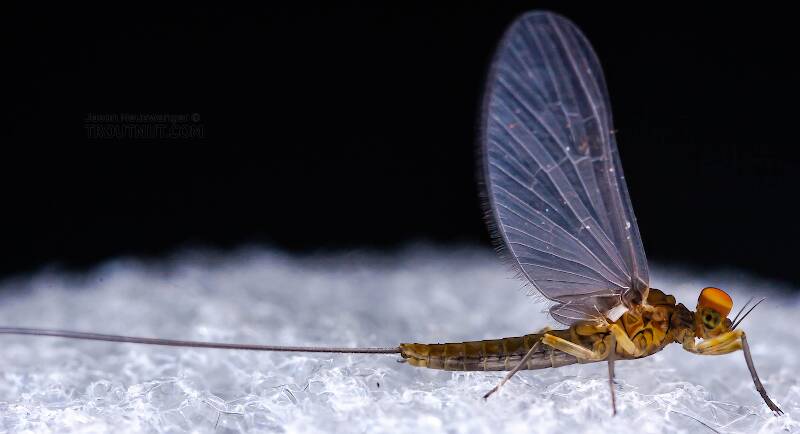
Blue-winged Olives
Baetis
Tiny Baetis mayflies are perhaps the most commonly encountered and imitated by anglers on all American trout streams due to their great abundance, widespread distribution, and trout-friendly emergence habits.
Featured on the forum
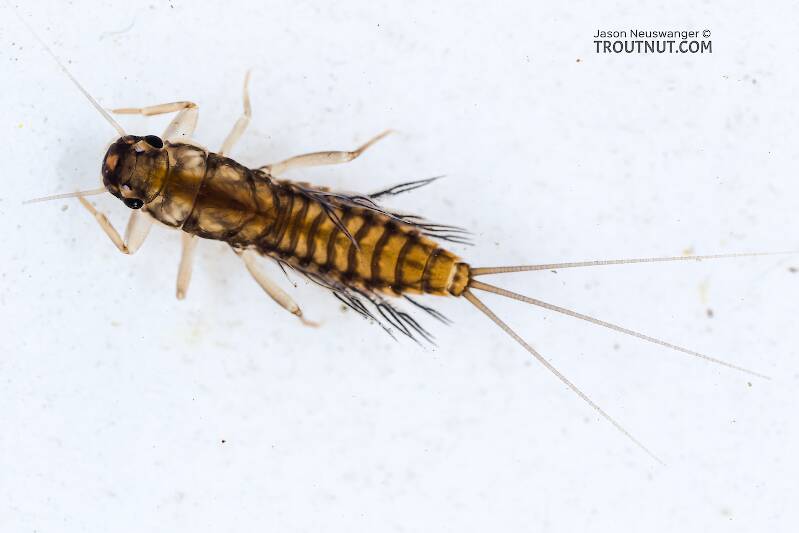
Some characteristics from the microscope images for the tentative species id: The postero-lateral projections are found only on segment 9, not segment 8. Based on the key in Jacobus et al. (2014), it appears to key to Neoleptophlebia adoptiva or Neoleptophlebia heteronea, same as this specimen with pretty different abdominal markings. However, distinguishing between those calls for comparing the lengths of the second and third segment of the labial palp, and this one (like the other one) only seems to have two segments. So I'm stuck on them both. It's likely that the fact that they're immature nymphs stymies identification in some important way.

Troutnut is a project started in 2003 by salmonid ecologist Jason "Troutnut" Neuswanger to help anglers and
fly tyers unabashedly embrace the entomological side of the sport. Learn more about Troutnut or
support the project for an enhanced experience here.
Benjlan on Jan 11, 2011January 11th, 2011, 2:36 pm EST
Benjlan on Jan 11, 2011January 11th, 2011, 2:36 pm EST
Benjlan on Jan 11, 2011January 11th, 2011, 2:43 pm EST
The pic does not do this fish justice as he/she was very colorful. I think maybe the flash reflected. Just got a digital camera from x-mas, guess no more fish stories for me :)
PaulRoberts on Jan 12, 2011January 12th, 2011, 3:40 am EST
That's a nice 'bow. Colors look good from here -winter metallic and a little smoky on the flanks -likely a prespawn male. See the warped dorsal, indicating hatchery origin?
I usually shut the flash off. A weak fill flash can be nice but without control of it the reflections are too much. It seems many point-n-shoots don't handle this well.
I usually shut the flash off. A weak fill flash can be nice but without control of it the reflections are too much. It seems many point-n-shoots don't handle this well.
Ericd on Jan 12, 2011January 12th, 2011, 6:18 am EST
"See the warped dorsal, indicating hatchery origin?"
I think all Iowa streams in the Driftless Area are stocked. I don't know why there is no/little natural reproduction, if it's true. I'd be interested in knowing the facts though if anyone knows them.
Eric
I think all Iowa streams in the Driftless Area are stocked. I don't know why there is no/little natural reproduction, if it's true. I'd be interested in knowing the facts though if anyone knows them.
Eric
PaulRoberts on Jan 12, 2011January 12th, 2011, 7:10 am EST
In the small to mid-sized streams I fished back east, rainbow production was pretty good. But...most bows have a penchant to grow fast (too big for natal streams) and willingness to drop out downstream -more so than other species. They generally like larger water than many eastern and midwestern streams offer. If there's a big cold river or coldwater lake below they'd return BIGGER! But otherwise, they were gone and would simply not be stocked in such waters.
In the streams with cold lakes below, there were subpopulations of "resident" bows in the upper reaches that hit about 11 inches -most smaller -mixed in with the browns. In some streams I fished I located good numbers of bows downstream nearer the warmer mid-reaches that averaged a bit larger -mostly in the 11 to 13inch range. These stretches were notable in that there were very few other trout species there. These were "bow stretches" that were larger with deeper pools than upstream brown trout waters. If I wanted to catch "big" bows I had to go to the big waters -like the Delaware, or wait until lake fish ran into tribs. This is similar here in CO too -the big bows are caught in big waters.
I'm sure your state stream biologists could tell you the particulars in your waters. Likely it's the same there, unless your state has experimented with other rainbow stocks.
In the streams with cold lakes below, there were subpopulations of "resident" bows in the upper reaches that hit about 11 inches -most smaller -mixed in with the browns. In some streams I fished I located good numbers of bows downstream nearer the warmer mid-reaches that averaged a bit larger -mostly in the 11 to 13inch range. These stretches were notable in that there were very few other trout species there. These were "bow stretches" that were larger with deeper pools than upstream brown trout waters. If I wanted to catch "big" bows I had to go to the big waters -like the Delaware, or wait until lake fish ran into tribs. This is similar here in CO too -the big bows are caught in big waters.
I'm sure your state stream biologists could tell you the particulars in your waters. Likely it's the same there, unless your state has experimented with other rainbow stocks.
Quick Reply
Related Discussions
Topic
Replies
Last Reply

